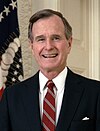|
Energy Policy Act of 1992
The Energy Policy Act of 1992, effective October 24, 1992, (102nd Congress H.R.776.ENR, abbreviated as EPACT92) is a United States government act. It was passed by Congress and set goals, created mandates, and amended utility laws to increase clean energy use and improve overall energy efficiency in the United States. The Act consists of twenty-seven titles detailing various measures designed to lessen the nation's dependence on imported energy, provide incentives for clean and renewable energy, and promote energy conservation in buildings. Amendment of prior energy actsIt reformed the Public Utility Holding Company Act of 1935 (PUHCA) to help small utility companies stay competitive with larger utilities and amended the Public Utility Regulatory Policies Act (PURPA) of 1978, broadening the range of resource choices for utility companies and outlined new rate-making standards. It also amended parts of the Federal Power Act of 1935 (Title VII). TitlesThe act addressed:
Title I--Energy efficiencyTitle I established a comprehensive energy efficiency program that included incentives for energy conservation in buildings and created efficiency standards for appliances. The EPAct directed the federal government to decrease energy consumption in federal buildings when feasible, and to integrate the use of alternative fuel vehicles in federal and state fleets. There are separate sections dedicated to coal, oil, natural gas, and nuclear energy detailing clean energy incentives, research & development strategies, conservation goals, and responsible management practices. Energy efficiency provisions
Title III--Alternative fuelsTitle III of the 1992 Energy Policy Act addresses alternative fuels. It gave the U.S. Department of Energy administrative power to regulate the minimum number of light duty alternative fuel vehicles required in certain federal fleets beginning in fiscal year 1993. Title III includes:
Title VI--Electric motor vehiclesThe United States Department of Energy, which has EPACT92 implementation authority, ruled that diesel-electric or gasoline-electric hybrids are not "alternative fuel vehicles."[2] Title VIII--Radioactive wasteSection 801 directed the United States Environmental Protection Agency to promulgate radiation protection standards for the Yucca Mountain nuclear waste repository, which had been designated by the Federal government to serve as the permanent disposal site for used nuclear fuel and other radioactive materials from commercial nuclear power plants and U.S. Department of Defense activities. Title XII--Renewable energyTitle XXII in the EPAct authorized tax incentives and marketing strategies for renewable energy technologies in an effort to encourage commercial sales and production. Title XX--Reduction of oil vulnerabilitySection 2026 known as Renewable Hydrogen Energy establishes a five year program in accordance with the Spark M. Matsunaga Hydrogen Research, Development, and Demonstration Act of 1990 for the distribution, production, storage, and utilization of hydrogen. ImpactEPACT92 was far reaching in the impacting electric power deregulation, building codes and new energy efficient products. The act was also responsible for the mandate of low flush toilets and outlawing the installation of toilets that flushed more than 1.6 gallons (6 liters) of water. See also
References
External links
|
||||||||||||||||||||||||||||||||||||


